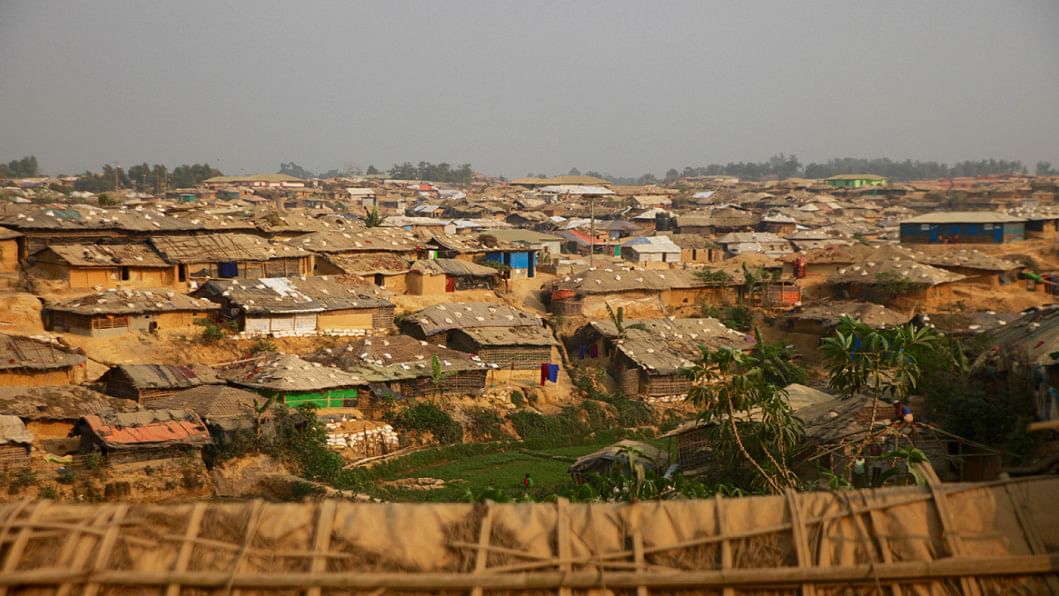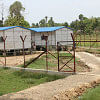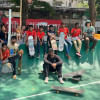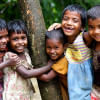Monsoon: 55,000 Rohingya children at risk in Cox's Bazar

Unicef has estimated that more than 100,000 people including approximately 55,000 children, mostly Rohingyas, are at risk due to floods and landslides in Cox's Bazar district which is one of the most flood prone areas of Bangladesh.
"It's possible that this figure could go up to 200,000 people depending on the intensity of rains," said Christophe Boulierac, Unicef spokesperson, at a regular briefing in Geneva on Tuesday.
Unicef said they need US$10 million to fund their monsoon response. So far, they have raised US$5.9 million.
During monsoon season, which lasts from June to September, the overall health and wellbeing of Rohingya refugee children are affected.
Increased risk of infectious disease, poor water and sanitation hygiene, and injury impact children whose immune systems are already weakened by acute malnutrition.
The pre-monsoon rains have started in Cox's Bazar, which is one of the most flood prone areas of Bangladesh.
On the night of April 26, a storm damaged shelters and affected several families in refugee camps.
On Monday, during intense winds before the rains, and during the storm, many children were seen sitting on top of their family's shelters in an attempt to keep the plastic roof tops from blowing away.
The Monsoon rains could have a devastating impact on water and sanitation, says Unicef spokesman.
A recent mapping of 7727 tube wells showed that almost half (47 per cent) of tube wells and almost a one in three (30 per cent) latrines are at risk of being affected by flooding and landslides.
Unicef is prepositioning emergency water and Sanitation supplies, replenishing its stocks of hygiene/dignity kits, dislodging and building latrines.
Because of Monsoon, children are at risk of being cut off from lifesaving medical services.
In case of flooding, the number of people suffering from acute watery diarrhea is likely to increase.
Unicef and partners are readying to support an estimated 10,000 people, more than half of which (55 per cent) are children, with treatment for Acute Watery Diarrhea over the next three months.
Unicef is constructing five additional Diarrhea treatment centers.
One has already opened, two others will open later this week and the two last ones at the end of May.
"We have also prepositioned medicines and supplies. At least three out of 24 health facilities supported by Unicef in the camps and makeshift settlements are at risk of flooding. This could affect between 25,000 and 30,000 people, more than half of which are children," said the spokesperson.
"We have set up 10 health facilities, supporting around 250,000 beneficiaries. Working with the Bangladesh Government and the WHO, we are also planning to reach almost 1 million people from May 6 to May 13 for the second round of Oral Cholera Vaccinations."
The nutrition status of Rohingya child refugees could also be affected given the specific risks they are facing during this season.
Unicef will work to ensure all children with Severe Acute Malnutrition are accurately identified and fitted with a red identification bracelets to ensure community based management of acute malnutrition.
Unicef and partners have admission capacity for 35,000 children for 6-59 months specifically for Severe Acute Malnutrition treatment.
"We have established Mobile Nutrition teams as part of Mobile Medical Units to provide integrated health and nutrition support to camp-based populations in remote areas," said the spokesperson.
Children are also at risk of getting separated from their families due to inundations and mudslides.
Unicef and partners have strengthened their key protection mechanisms in the affected camps.
The physical infrastructure of the Child Friendly Spaces in the flood plain areas is being reinforced. Work around the prevention of family separation, a very real risk in the camps, continues.
This includes explaining to communities what families should do if a child goes missing and securing 250,000 plastic, waterproof identification bracelets.

 For all latest news, follow The Daily Star's Google News channel.
For all latest news, follow The Daily Star's Google News channel. 








Comments